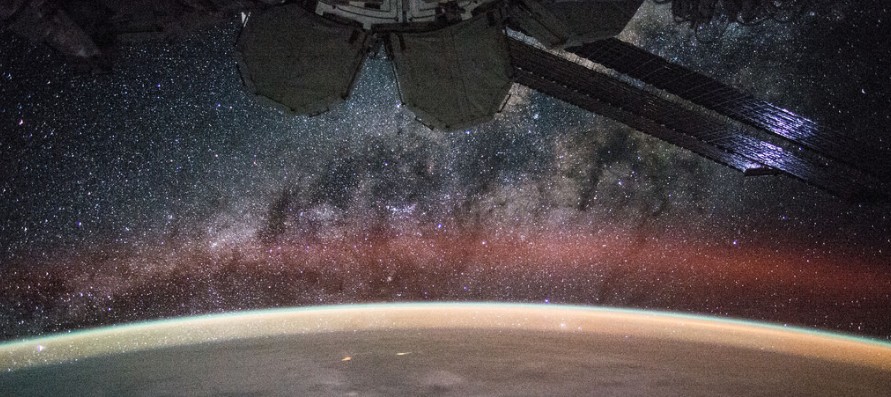ISS makes 100 000 orbits around Earth

As it passed Earth's equator at 06:10 UTC on May 16, 2016, the International Space Station (ISS) started its 100 000th orbit around Earth. It took 17 years for ISS to reach this important milestone.
During the 100 000 orbits since the first component of the station was launched on November 20, 1998, the station traveled around 4 254 046 973 km (2 643 342 240 miles), or roughly the distance between Earth and Neptune. This is also roughly equivalent of about 10 round trips between Earth and Mars at the average distance between the two planets.
The station travels at 28 160 km/h (17 500 mph), orbiting Earth every 90 minutes and traveling through 16 sunrises and sunsets per day.

100,000th orbit of Earth. Learn more about the growth of this #HistoricSpace in my FB note: https://t.co/ItPkZiGTeghttps://t.co/SRh7wlFdlc
— Jeff Williams (@Astro_Jeff) May 16, 2016
A few hours after the station reached this orbital benchmark, a several types of Cubesats were deployed from the Kibo lab module’s airlock.
More Cubesats are being deployed through Wednesday, May 17, contributing to a wide variety of research designed by students and scientists.


Featured image credit: NASA/ISS

hahahahahahaha, NASA ISS HOAX Watterbubbles- in sec Video bei 10 min!!!
Look youtube NASA FAKE and YOU TUBE Czhannel from Markus Müller Video Name:”Wer fälscht besser die NASA oder Roskosmos!
gretts from US-Bilderberger-Bohemian Grove Satelitenstate Germany
P.S. in Sec. Video the first Astronaut Look the Ring on Right Hand-Freemasons!!!!!!
Rabäääää Buhuhuhu THE WORLD IS FAKE and we too!
Fimbulstran the NEW Leader and God of Germany in 2018 when Merkel drives in Hell and Fuck with Dogs and Pics and Horses and Obama too,Michele Obama is a Man a Trans gender-Pfui